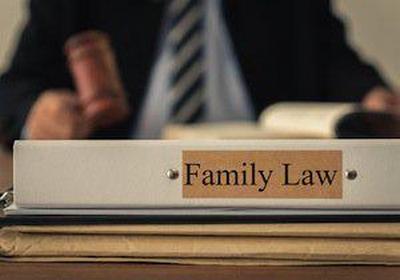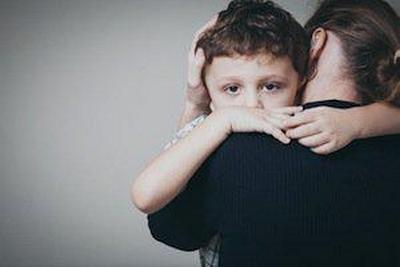Free Initial Consultations
 630-580-6373
630-580-6373With offices in Naperville, Joliet, Wheaton, Plainfield & Chicago
 Divorcing couples have several issues to decide, including how to divide their personal property. While it may be simple to divide furniture and other household goods, dividing valuable collectibles, antiques, or other rare items may prove difficult. Moreover, a fight over items with significant monetary value could turn an otherwise easy divorce into a battle.
Divorcing couples have several issues to decide, including how to divide their personal property. While it may be simple to divide furniture and other household goods, dividing valuable collectibles, antiques, or other rare items may prove difficult. Moreover, a fight over items with significant monetary value could turn an otherwise easy divorce into a battle.
There are certain situations in which divorcing spouses in Illinois are able to simply come to an agreement with regards to the value of the items they plan on dividing, and take action to split them up between each other in order to avoid a drawn-out fight. In other cases, however, couples may fight over each and every antique or valuable in the house. If you find yourself in the latter scenario, it is certainly in your best interests to reach out to a skilled attorney in your area for professional assistance.
 Lawyers do not like to lose in court. This is particularly true in divorce cases where the attorney knows the “losing” party might experience a tremendous financial change or lose parental rights.
Lawyers do not like to lose in court. This is particularly true in divorce cases where the attorney knows the “losing” party might experience a tremendous financial change or lose parental rights.
When you lose in court, you may feel like you want a second chance to change the court's decision. Many individuals have heard of the term ‘appeal,’ and understand that an appeal can reverse a court's decision on a matter. What you may wonder after a decision in a divorce is whether or not you can appeal the trial court's decision; and, if so, if you in fact should appeal the decision.
Ultimately, the answer depends on the specifics of the case, which is why it is important to speak to an attorney beforehand.
Appeal Rights in Family Law Cases
When you file an appeal, you are requesting that the Illinois Court of Appeals review the decisions and conclusions made by a lower court. Illinois law must grant the right to appeal. Therefore, if the law does not grant the right to appeal then you may not file an appeal. It is possible to file an appeal after a trial court enters a “final decision.” This is not the same as a final order, which you are not able to appeal. A lawyer will be critical to helping you understand which orders you can appeal and those which you cannot.
 When a couple finalizes a divorce, it is likely that one of the former couple’s circumstances will change at some point in time after the divorce. This is particularly true if a couple married earlier on in life. If the changes in one person’s circumstances is significant, it is likely that, after providing notice and submitting a motion, a court will order a child support or maintenance modification.
When a couple finalizes a divorce, it is likely that one of the former couple’s circumstances will change at some point in time after the divorce. This is particularly true if a couple married earlier on in life. If the changes in one person’s circumstances is significant, it is likely that, after providing notice and submitting a motion, a court will order a child support or maintenance modification.
Changes That May Justify a Modification
In order to obtain a modification, the party requesting the change must first demonstrate to the court that they have had a substantial change in circumstances. Changes in circumstances that may justify a modification may include:
 There may be circumstance that lead a couple to request that a court declare their marriage invalid. Invalidity of marriage, commonly known as annulment, is a different process than divorce. A court will only declare a marriage invalid under the specific circumstances; it is important to speak to a skilled attorney if you are interested in pursuing this option.
There may be circumstance that lead a couple to request that a court declare their marriage invalid. Invalidity of marriage, commonly known as annulment, is a different process than divorce. A court will only declare a marriage invalid under the specific circumstances; it is important to speak to a skilled attorney if you are interested in pursuing this option.
When is a Marriage Invalid?
Under the Illinois Marriage and Dissolution of Marriage Act, a court may find a marriage invalid if it was entered into under one of the circumstances below:
 The state of Illinois now requires parents with a minor child who file for divorce to attend a class, as many children experience both short and long-term effects after a divorce. This class seeks to assist parents with helping their children during a difficult time. If you are struggling through a child custody issue with your former spouse, it is important to understand how the course may help you make this difficult process easier for your child.
The state of Illinois now requires parents with a minor child who file for divorce to attend a class, as many children experience both short and long-term effects after a divorce. This class seeks to assist parents with helping their children during a difficult time. If you are struggling through a child custody issue with your former spouse, it is important to understand how the course may help you make this difficult process easier for your child.
What is the Parenting Class?
The Illinois Supreme Court Rule 924 requires all parents to complete a four-hour parenting course after a divorce or paternity case is finalized. The course seeks to educate parents about the ways their children may react to divorce issues like visitation and custody arrangements. The course also provides information so that parents can help their child adjust to life after divorce. The class teaches parents how to recognize when young children express emotions like anger, sadness and confusion..
 The Illinois Marriage and Dissolution of Marriage Act requires couples to value and divide property before a court will grant a divorce. Oftentimes, a divorcing couple is able to sit down and figure out who gets what, and divide property. Sometimes this just not possible because of a dispute, refusal to compromise, or complex issues regarding the ownership or value of property. These tedious and emotionally charged disputes can leave a divorcing couple feeling frustrated and exhausted.
The Illinois Marriage and Dissolution of Marriage Act requires couples to value and divide property before a court will grant a divorce. Oftentimes, a divorcing couple is able to sit down and figure out who gets what, and divide property. Sometimes this just not possible because of a dispute, refusal to compromise, or complex issues regarding the ownership or value of property. These tedious and emotionally charged disputes can leave a divorcing couple feeling frustrated and exhausted.
Fortunately, there are several different ways you and your spouse can help expedite the process of valuing and dividing your personal property, including:
 There is never really a good time to divorce. However, it may be especially rough for a couple that decides to divorce as their children become teenagers and young adults.
There is never really a good time to divorce. However, it may be especially rough for a couple that decides to divorce as their children become teenagers and young adults.
Parents will need to make important decisions regarding their teens and their divorce. If the children are closer to college age or even the planning stages, there are key issues that a couple will want to consider as well.
Who Gets the College Savings Account?
A couple may have jointly started a 529 savings account for their child in order to save money for their child's college education. Like any other joint asset under Illinois law, the account is owned by both parents and it will be awarded to one parent, or the account will be split between the couple. Before making the decision about how to deal with the the account, parents should remember that they will no longer have a say in how the account is used once the divorce is finalized. It is also important to remember that a 529 account can be counted as household income when the child applies for financial aid.
 By now most Illinoisans know that starting January 1st, 2016, Illinois family law received a substantial facelift. “Legal custody” is a familiar legal concept that is being overhauled as part of the Illinois lawmakers’ efforts to modernize Illinois’s family law. The progress of cases in 2016 will help Illinois lawmakers determine whether these changes to how a court determines child custody will benefit Illinois families or further complicate already complex child custody determinations.
By now most Illinoisans know that starting January 1st, 2016, Illinois family law received a substantial facelift. “Legal custody” is a familiar legal concept that is being overhauled as part of the Illinois lawmakers’ efforts to modernize Illinois’s family law. The progress of cases in 2016 will help Illinois lawmakers determine whether these changes to how a court determines child custody will benefit Illinois families or further complicate already complex child custody determinations.
Legal Custody vs. Child Custody
Legal custody and physical custody are similar concepts. Physical custody determination decides with which parent a child should physically reside; legal custody decides which parent will make important decisions about a child’s upbringing and well-being, such as educational, religious, medical, and other important decisions.
 When your child has been removed from your care, it can be difficult to determine what steps to take next. It can also be difficult to regain child custody and have your child returned to you. If your child has been removed from your home, then you may feel powerless and angry. While these feelings are normal, you should also be aware of your legal rights.
When your child has been removed from your care, it can be difficult to determine what steps to take next. It can also be difficult to regain child custody and have your child returned to you. If your child has been removed from your home, then you may feel powerless and angry. While these feelings are normal, you should also be aware of your legal rights.
What Can I Do to Help Get My Child Back?
First, you need to make sure that you give the court all of the information it needs. This can be hard when you are worrying about your child. Also, you should begin working on every aspect of your life that will help you get your child back. Additionally, if you want to have your child back, then start coordinating with the court, your case worker, and your lawyer to begin working towards getting your child home.
 Every parent has the right to decide how their children are raised. Parental rights are fiercely protected by the law. Parental rights also come with parental responsibilities. If a birth parent has decided to place a child up for adoption, then both parents must give up these rights. Giving up parental rights, or consenting to an adoption, is an important and critical legal step for biological parents. If you are making the difficult decision to place your child up for adoption, you will need to understand the full impact of consenting to your child’s adoption.
Every parent has the right to decide how their children are raised. Parental rights are fiercely protected by the law. Parental rights also come with parental responsibilities. If a birth parent has decided to place a child up for adoption, then both parents must give up these rights. Giving up parental rights, or consenting to an adoption, is an important and critical legal step for biological parents. If you are making the difficult decision to place your child up for adoption, you will need to understand the full impact of consenting to your child’s adoption.
Requirement for Consenting to Adoption
When parents consent to an adoption, the parents give up both their rights and responsibilities. Illinois provides two different ways for parents to consent to an adoption:
Specific Consent to Adoption: A parent may specifically provide consent for the person taking care of his or her child to adopt the child. This type of consent requires DCFS to approve the designated parent. A specific consent, or direct consent, is only valid for the selected adoptive parents.
